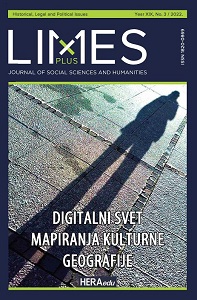ISTRAJNOST SLIKOVITOG PAMĆENJA: FOTO-ARHIV UMETNIKA U DIGITALNOM DOBU
PERSISTENCE OF PICTORIAL MEMORY: PHOTO ARCHIVES OF ARTISTS IN THE DIGITAL AGE
Author(s): Milena JokanovićSubject(s): Photography, Social history, Sociology of the arts, business, education
Published by: HESPERIAedu
Keywords: photo archive; collection; memory; found object; digital age
Summary/Abstract: Тhis paper analyzes the phenomenon of artists’ photo archives in the modern age of digital photography and new media. The last two decades have seen the rise of a special type of artist who collects old, analog photographs and creates particular archives. Like modern walkers, strolling through the city, but also through flea markets and garbage piles, where they collect various objects, these artists collect disposed old photographs, witnesses of personal memories left to oblivion. The very aesthetics of selected images, most often in black and white, developed on photo paper or cardboard with already eroded edges revealing layers of dust, together with the impulse to store and archive, suggest the artist’s desire to resist technological development and inevitable progress. By intervening in their photo archives, artists give new meanings to collected images. These witnesses of personal memories, having lost their primary owners, become the basis for further interpretations, recontextualization and recategorization. However, when appropriating segments of created archives in their works, artists often express themselves through new media, thus raising questions about the relationship between the culture of memory that analog photography of the mid-twentieth century depicts and today’s digital spaces of art and memory, and transmedia perception of the observer. By analyzing artists’ statements about the need to create collections of old photographs and examples of their interpretation in art, we examine the persistence of the medium of analog photography, i.e. the ability of these images of the past to endure and continue their lives in the age of digital transformation. Therefore, we rely on the history of photography and the modern and contemporary art history and theory in the context of artistic collecting practices, and the (new) media theory on the one hand, and contributions in the field of culture of memory and collections’ history, on the other. The analysis of the selected case, the photo archive of the artist Vladimir Perić, with whom a detailed interview has been conducted for the purposes of this research, illustrates the above theoretical premises.
Journal: LIMESplus
- Issue Year: 2022
- Issue No: 3
- Page Range: 97-120
- Page Count: 24
- Language: Serbian

